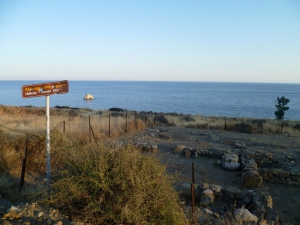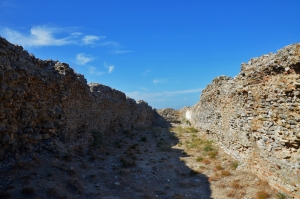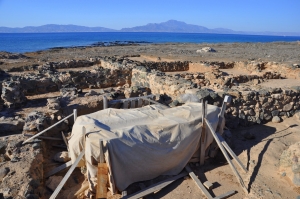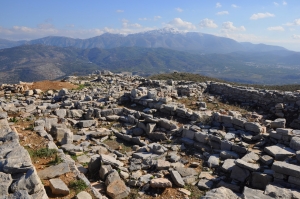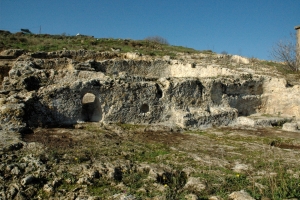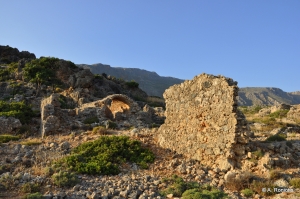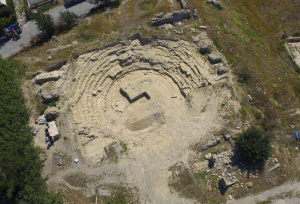At this site, in 1981, a large building of the Roman period was found that probably operated as a mansion.
At the west end of Tholos beach we meet the ruins of a large oblong building that served as a granary for storing grain and other products, especially during the Roman Era. Then, the port of Tholos was a transshipment point for ships carrying grain between Alexandria of Egypt and Rome. It is believed that is was also used during the Venetian Times.
An important settlement of the Minoan and Roman period has been found in the island Chrysea of ancient Greeks, the present island of Chrissi or Gaidouronisi. Buildings and at least three carved tombs have been identified near the church of Agios Nikolaos and the lighthouse on the island. The settlement was probably used for the production of Tyrian purple from the shells of Murex brandaris, exactly like the neighboring isle of Koufonissi.
At the top of the rocky hill of the Prophet Elijah (Profitis Ilias) near Smari, at an altitude of 590m, there are the ruins of a citadel with a strong defensive wall. The place has panoramic views across the fertile planes of Kasteli and Smari. According to the archaeologist Hadjivallianou, the citadel was the actual site of ancient Lyttos mentioned by Homer. The city was inhabited from 1800 BC till 630 BC, before being abandoned by its inhabitants.
West of the town of Arkalohori rises for rock of Prophet Elijah (Profitis Ilias) with the homonym chapel at the top and the Minoan sacred cave of Arkalochori. On the hillside facing Arkalochori an extended settlement that was inhabited from the Minoan to the Ottoman era has been detected.
The bay where today's Loutro settlement is built was the port of ancient towns Anopolis and Aradena. This port is mentioned in ancient texts as Phoenix or Katopolis. The gods Zeus and Apollo were worshiped in Phoenix.
The ancient city of Eltynia, Eltyna or Eltynea was dispersed in the present plain of Peza, but its main core was probably located in the current site of the village Kounavi. The main occupation of its inhabitants was viticulture and winemaking, which is still a key sector of the local economy.











